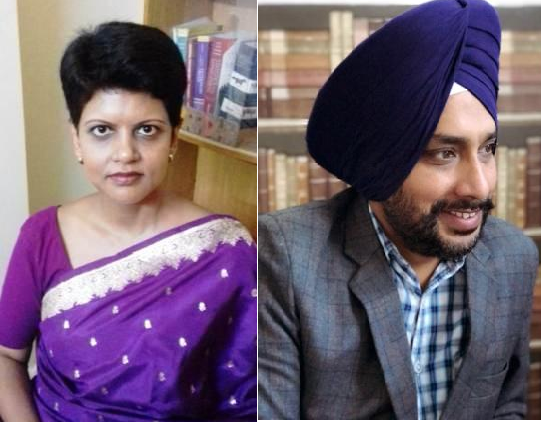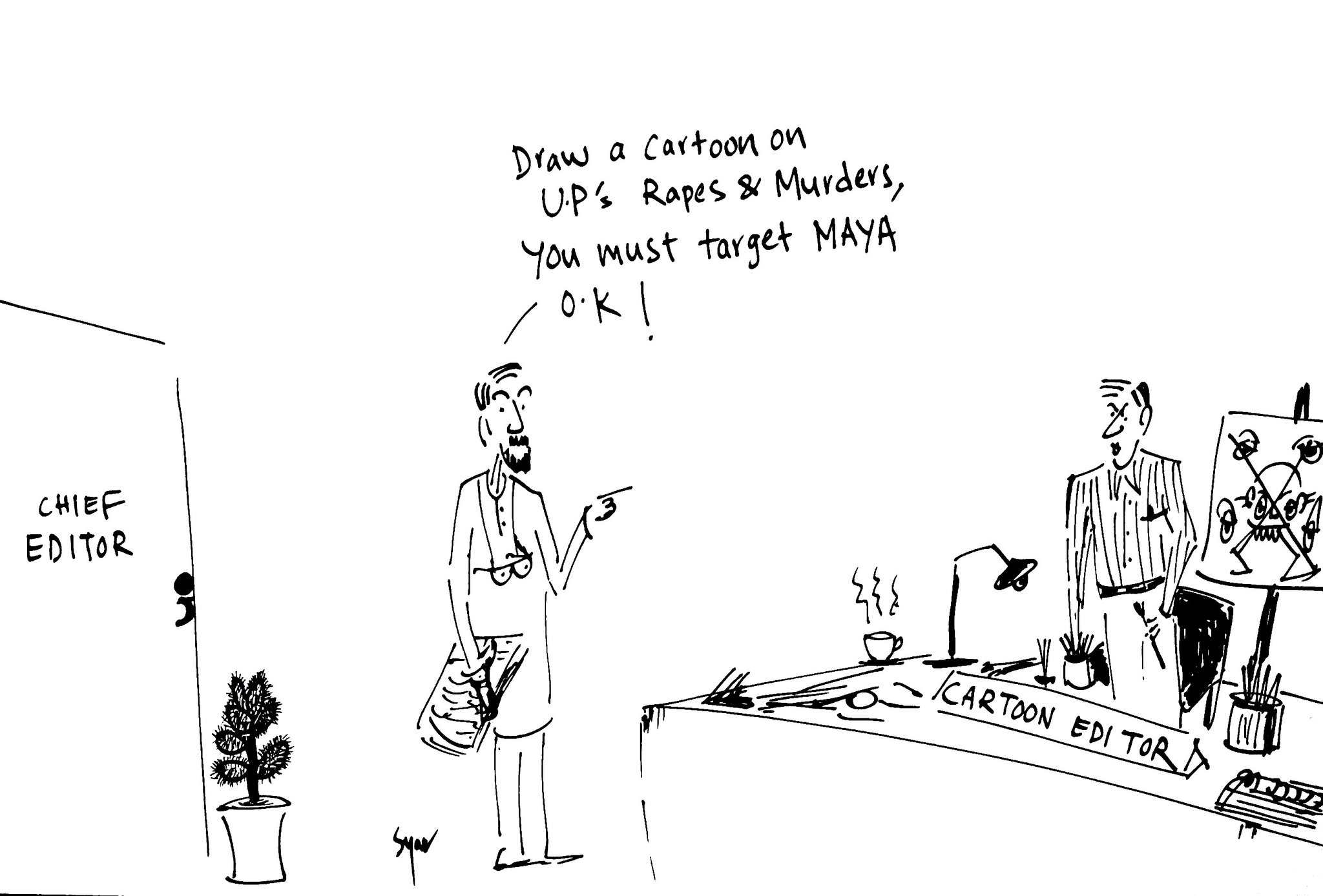Dr Anuradha Bele & Dr Jas Simran Kehal
 The Brahmin and Vaishya population in India is very small. Yet if we study top 1000 companies in India, it is seen that in the board of directors, 93% are upper castes including Brahmins, Vaishyas, Parsis, Ashrafs and Syrian Christians (early Brahmin converts to Christianity), with 46% Vaishyas and 44% Brahmins. The OBCs and SC/STs are meagre 3.8% and 3.5% respectively.
The Brahmin and Vaishya population in India is very small. Yet if we study top 1000 companies in India, it is seen that in the board of directors, 93% are upper castes including Brahmins, Vaishyas, Parsis, Ashrafs and Syrian Christians (early Brahmin converts to Christianity), with 46% Vaishyas and 44% Brahmins. The OBCs and SC/STs are meagre 3.8% and 3.5% respectively.
The Indian corporate board has nine members on an average, and 88% of these are insiders; only 12% are independent directors. The corporate board thus lacks diversity and is completely dominated by the Brahmins and Vaishyas. Decision making body is kept entangled in caste and kin web-work confining Indian corporate board to a small and closed world – a world which is impermeable to labour class and lower castes. Indeed, cronyism is built into the caste system and this system has taken India to 9th global rank in crony-capitalism index.
Seven decades after Babasaheb’s appeal for economic democracy, has India narrowed the rich-poor or upper-lower caste divide? Has three decades of liberalization, privatization & globalization assisted in alleviation poverty of the masses? The answer is a definitive no. On the contrary, corporates have coined capital thereby consolidating the fruits for a few, both in terms of caste as well as class.
How did the Brahmin-Bania network shatter Dr Ambedkar’s dream of social and economic democracy and how by consistently doing that they contrived to make his worst fears of putting political democracy in peril come true? Democracy has been held at ransom by Tatas and Birlas during Congress regime and nowadays by Ambanis and Adanis.
The modus operandi of upper castes is simple : build consensus for favourable policy changes by constructing dubious narratives, publicise them at international and national publications and forums, and then these narratives are used by the government agencies, made up predominantly of upper castes, to make and justify decisions, favouring their kith and kin only. This is another way to undermine democracy, which as Babasaheb had pointed out is just a top soil on this land.
In 2005, an interesting paper titled Partial Privatization and Firm Performance, written by Nandini Gupta of Indiana University, USA appeared in Journal of Finance. Along with history of India’s privatization program, the paper pointed out the merits of partial privatization proving its positive impact on profitability, productivity and investment. It also stressed on reducing surplus employment to enhance efficiency and profitability. It is safe to assume that Ms. Gupta is an American citizen.
India has the world’s third largest investor base with over 20 million shareholders investing in about 10,000 listed companies. The paper highlighted the role that the stock market can play in monitoring and rewarding managerial performance, and how stock market performance can be a valuable indicator for evaluating managerial skills. According to the paper, the fact that in the decade following economic liberalization there was a rapid growth in executive compensation in the private sector further, bolsters the argument.
If we look at executive compensation and take the example of the CEOs, India has the dubious distinction of being the only non-US country besides UK, where the CEOs make more than 200 times their employees. In the Netherlands the ratio is 171:1; in Switzerland it is 152:1. In Germany, where workers are represented on boards of directors, it is 136:1.33. So when we look at the performance of the shares on the stock market as an indicator of privatisation being successful, we are looking at it only from the lens of the Brahmin and Vaishyas castes.
Continuing to look through the upper caste lens, this study by Gupta (2005) formed one of the references for another interesting paper, Employment Protection Laws and Privatization, published in 2018. The authors were Prof. Krishnamurthy Subramanian of Indian School of Business, Hyderabad and Prof. William Megginson of University of Oklahoma. This paper examined the detrimental effects of labour protection laws on privatisation based on study of privatization deals in 14 European countries from 1977-2003.
The message that the paper by Gupta (2005) gave to them was that employment increases significantly after privatization, but this paper did not mention which type of employment – managerial or labour. The paper argued for doing away with the stringent labour laws in India. The paper stated that in industries that are low-skilled, the fear of layoffs is higher and the opposition to privatization is more and this opposition is aided by the stringent labour protection laws, and may have more unionised work force which exerts political pressure and hence the need to relax the labour laws.
Prof Subramanian, whose doctoral guide was Prof. Raghuram Rajan in University of Chicago Booth School of Business, is currently serving as Chief Economic Advisor (CEA) to Govt. of India. Till date, India has had 17 Chief Economic Advisers- all have been uniformly upper caste. It will be interesting to study their citizenship details.
In 2015, Harvard Business Review published an article Understanding the Rise of Manufacturing in India by Vijay Govindarajan and Gunjan Bagla. It also made two interesting points about factors which inhibit future growth of American companies in India – difficult process of land acquisition and regulated labour laws. They cautioned the investors against treating India as a monolith, but advised them to treat India as a collection of states, and how states like Uttar Pradesh and Madhya Pradesh (both ruled by BJP) are working to help American companies establish their manufacturing facilities. The article gave the example of state of Madhya Pradesh which has implemented a single online registration for business licenses overriding 13 federal labour laws. Additionally, inspectors can come only once every five years, and that too after prior advance notice. This was one the earliest decisions taken by the BJP government, when the elected Congress government, led by Kamal Nath was replaced by Shivraj Chouhan, akin to a coup.
Interestingly, the news about the MP government’s push for reforming labour laws by abolishing the older requisites, written in 2015 in HBR was published, word for word in May 2020 in an Indian newspaper. The HBR article further stresses on the need to have in-house knowledge to work in India so a third party advisor (like one of the authors – a Brahmin and Marwari Shekawat Kshatriya) can aid in this process. This is a typical example of how nest of intrigue is woven around government-media-corporate by Brahmin-Bania.
The country where these policies, built and guided by the upper castes, directly affect human beings who comprise the faceless term “labour” has some of the most shameful statistics in the world. According to International Labour Organization India Wage report (2011-12), the average daily wage for regular urban worker is Rs.449/-, for regular rural worker is Rs.300/-, for casual urban worker is Rs.171/- and for casual rural worker is Rs.138/-. It would take 941 years for a minimum wage worker in rural India to earn what the top paid executive at a leading Indian garment company earns in a year, so a timeline of ten centuries of consistent opportunities for growth for the progeny of the rural worker, might lead to them becoming competitors for that top post.
Isabel Wilkerson’s book, Caste: The Lies that Divide us, explains that the notion of purity and pollution is kept alive by dehumanizing large sections of the population through occupational hierarchies. What we observe from above statistics that these strategies are devised and executed in our country to maintain what the upper castes term as purification of market economy.
Disproportionate distribution of wealth in pockets of the upper castes reflects in the Forbes list of billionaires. In the Forbes list of top 100 billionaires, 24 are Brahmins including Syrian Christians and Ashraf Muslims, 53 are Vaishyas including Jains and Sindhi trading castes, 7 are Kshatriyas, 10 are from former shudra castes, and 5 are Parsis: all of these castes constitute less than 10% of Indian population.
For the labouring castes, landlessness is India has increased from 15% to 24% from 1990s to 2012. The rich section of self-employment in agriculture comes from upper castes. But 94% casual labour is Bahujan, including Muslims. So the upper castes are again profiting from the labour of the lower castes, by keeping the labour at mere subsistence level of survival.
Focussing on agriculture, the clandestine buyout of the agriculture sector has been going on steadily for last decade or so. And why shouldn’t the banias eye this field? After all, the agriculture industry valued Rs. 56, 564 Billion in 2019, is the third largest contributor to India’s GDP and employs more than 50% of Indian workforce. In addition to being one the most bio-diverse country, India is presently one of the world’s largest agricultural producers by value. So, what can stop Brahminical powers to share this treasure with the Banias?
The average agricultural growth rate under NDA’s first four years halved to 2.4% from previous 4.3%. The back to back blows of demonetisation and poorly implemented GST badly impacted this sector. Compared with 19.5% growth in previous years, farm exports fell by 3.1% average in 2016-18. Farmer’s faith in government waned with Pradhan Mantri Fasal Beema Yojana witnessing a drop of about 17% enrolments in 2017-18.
To quell rural dissent as well as buy time to cede agriculture sector to the corporates, Modi regime in 2016 constituted Ashok Dalwai committee and cooked up narrative of Double farmer income (DFI) by 2022. As farm stress was a major issue in the run up to 2019 Lok Sabha elections, this Jhumla helped Modi regain power in 2019 but the matter of the fact was that in order to achieve DFI 2022 aim, an annual growth of 10.41% was required in farmers’ income.
As per NITI Aayog report, it took 22 years from 1994 to 2016 to double farmers’ income and this proposed doubling of income in five years by Modi was even questioned by European Union. Budget 2020 estimated India’s overall economy will grow at an 11-year-low of 5% and its agriculture and allied sector at 2.8%. The ground reality is that rather than income it is the farmers’ debt which is growing and the government has now quietly shifted the deadline to 2024 earlier this year.
Failure of agriculture sector either by deliberation or incompetence of government is acting as a breeding ground for industrialists to take over and convert it to agribusiness. Taking cue from favourable policy makers like the Swaminathan committee (2004) and Dalwai committee (2016), it is a simple Brahmin-Bania hand in glove arrangement to hand over bread and butter of lower castes to the corporates. It is this crooked arrangement and their desperation to annex the farm sector which has led to the government turning a blind eye to the on-going peaceful farmers protests at Delhi’s borders. After all, it requires capital to form cabinet nowadays. Politicians and political parties have become ancillary subjects to giant corporations and big businesses.
Land has been considered as one of the biggest impediments for companies looking to invest in India, with the plans of Saudi Aramco facing delays in acquisition. Incidentally, the lead author of our CEA Prof. Subramaniums’s paper on labour laws is Prof Bill Megginson who is the Saudi Aramco Chair (Head) Professor in Finance at King Fahd University of Petroleum and Minerals in Dhahran, Saudi Arabia. Meanwhile, the central government administration is working with state governments to change land acquisition laws. Embassies abroad are identifying companies scouting for options.
Govt. of India is the biggest landowner in India. Railways ministry has the highest square kilometre of land, followed by coal and the process of privatisation of railways has already started. India is focusing on developing a land pool to encourage businesses moving out of China. A total area of 461,589 hectares has been identified across the country for the purpose. That includes 115,131 hectares of existing industrial land in states such as Gujarat, Maharashtra, Tamil Nadu and Andhra Pradesh.
Not surprisingly, Dr. Ambedkar had foreseen this and had warned us about this in his memorandum, States and Minorities. He had exhorted the state to plan the economic life of people to provide equitable distribution of wealth, with state ownership of agriculture and modified form of state socialism for industries. An economy based on private enterprise and pursuit of personal gain will undermine and violate democracy, he said. The unemployed will relinquish their fundamental rights for securing the privilege to work and merely exist at subsistence level and his prophesy is unfolding before our eyes.
Brahmin-Bania mutualism continues to serve as an institution in creation and maintenance of inequality and is a definite impediment to annihilation of caste. It is in pursuit of Gowalkar’s terrifying vision of Hindutva which terms unequal society as an integral part of Hindu culture and prescribes that people should retain its personal characteristics (the rich must become richer and vice versa).
So now that liberalisation has entered its final phase in India, instead of prosperity what we see is on the ground is the use and abuse of the land, labour and natural resources of India, with the sentient and non-sentient beings of this exhausted land bearing the brunt of the health hazards and economic impoverishment and erosion of fundamental rights, while the upper caste, based in foreign lands, treats India as a case study in their business finance class.
Ill fares the land,
To hastening ills a prey,
Where wealth accumulates, and men decay.
(Oliver Goldsmith-1770)
~~~
Dr. Anuradha Bele is an electronics engineer and a veterinary doctor with a degree in management. She can be reached for references at anuradha.bele@gmail.com
Dr Jas Simran Kehal is an Orthopaedic surgeon at Nangal Dam, Punjab and a Masters in Journalism and Mass Communications.










